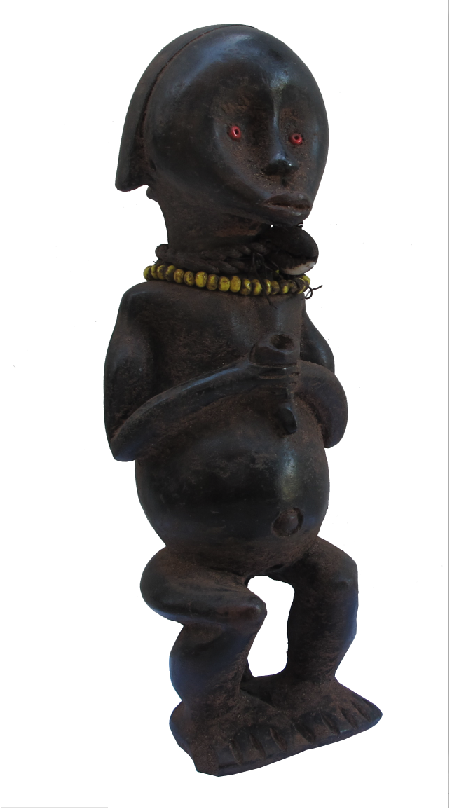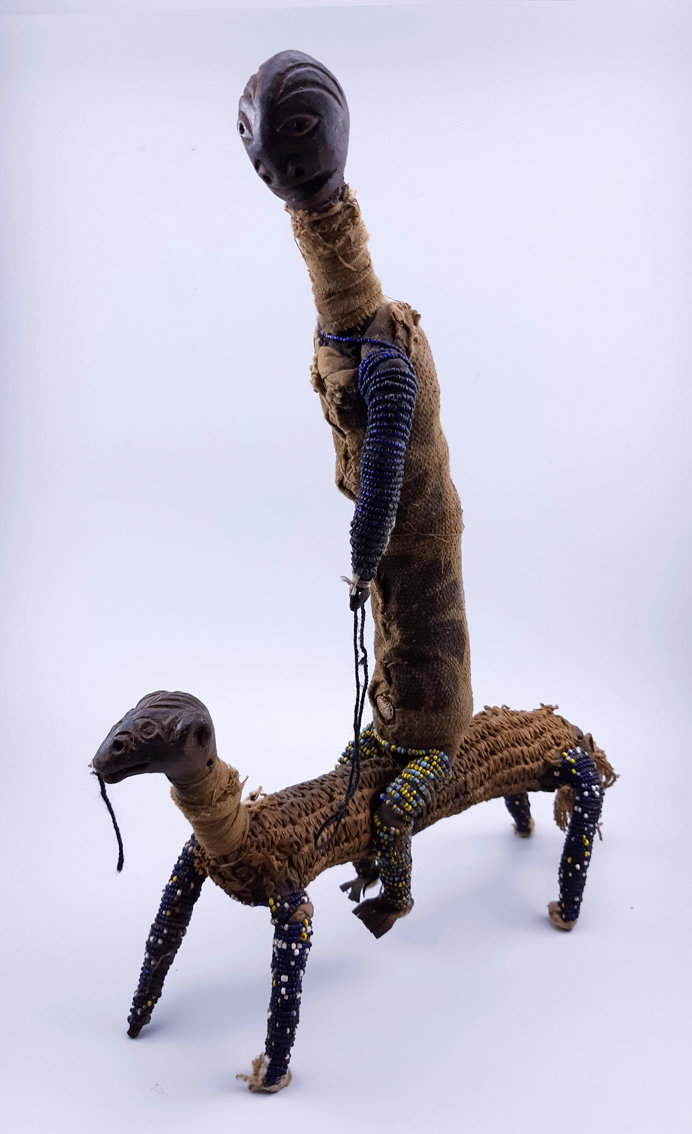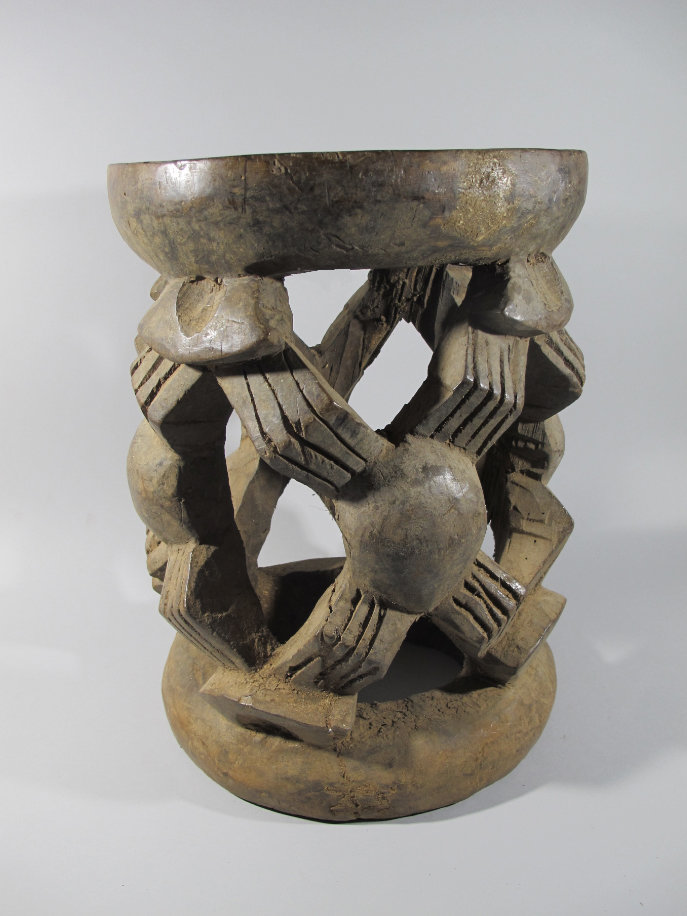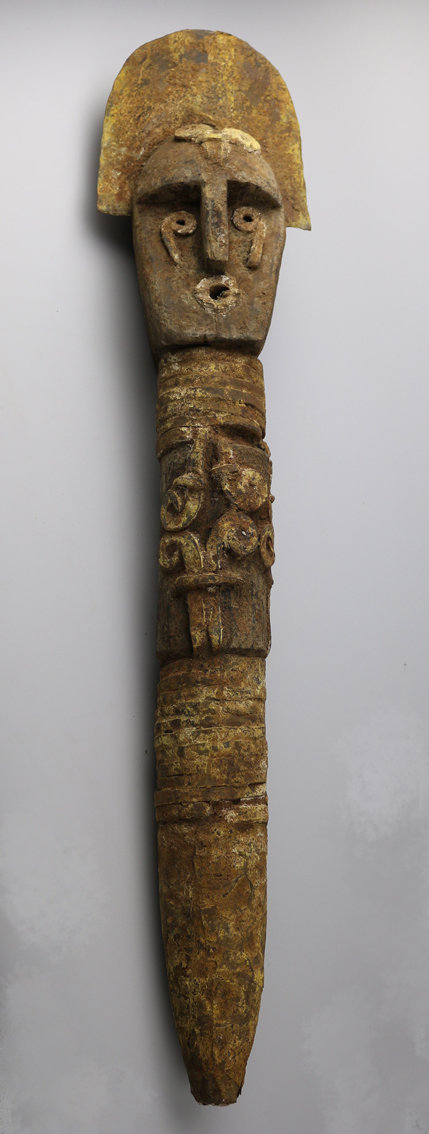- Vue Rapide
-
Vue Rapide
Les peuples connus sous le nom de Fang étaient des guerriers conquérant et ont envahis par bonds successifs, de villages en villages, toute la vaste région entre le Cameroun et le Gabon entre le XVIIIeme et le début du XXe siècle. Les figures Fangs perpétuent l’identité sociale, subsister dans un milieu naturel hostile et de dialoguer avec les défunts. Terre cuite, perles. H. 22cm. ( (Afrique, Art africain, Civilisation et ethnies -sku13afr).)
-
Vue Rapide€1.200,00
-
Vue Rapide€4.200,00
The Bamileke are a people of Central Africa, coming from Cameroon (West region) in the Grassland region where the Bamoun, Tikar also live, close to them by their common ancestors, their neighboring social structures and their languages. .
The work of D. Toukam (“History and anthropology of the Bamileke people”, Paris, L’Harmattan, 2010 and 2016; …) conclude that the Bamileke would most likely come from the Baladis of ancient Egypt (natives of Upper -Egypt). In Egypt, the current Feelahins / Copts are largely recognized as Baladis converted by force, but still retaining huge parts of their ancestral culture. Departing from Upper Egypt in the 9th century AD, the Baladis-Bamileke arrived in the Tikar region in the 12th century. They were neighbors of the Tikar, but were never descendants of Tikar, contrary to popular belief.
The Bamilekes are, in spiritual matters, of great complexity The whole of their traditional religious organization is composed of initiation practices, meditations and rituals.
Their production of objects linked to their different cults has been very rich and some cults are still in progress today by exploiting ancient masks kept in certain chiefdoms or with certain notables or pieces called ” replacement “created to replace old worn, too damaged parts or because the use was limited in time.
-
Vue Rapide€3.100,00
Ancient anthropomorphic bellows surmounted by an ovoid head in which the orbits are devoid of eyeballs. The brow bones are underlined by a fine incision in the wood, the prognathic mouth is in pout. The object being laid flat, the rear surface has characteristic erosions. According to an ancestral technique, these fire bellows maintained the fire permanently for a few days. The apprentice blacksmiths were introduced by the ancients to the sexual symbolism of the forge bellows. An eroded patina confirms its frequent use.
-
Vue Rapide€2.600,00
République Démocratique du Congo, Chokwé
Les Tchokwés sont un peuple bantou d’Afrique centrale et australe, surtout présent en République démocratique du Congo et en Angola, et à un moindre degré en Zambie. Quelques milliers vivent aussi en Namibie.
***
Democratic Republic of Congo, Chokwe
The Chokwe are a Bantu people from central and southern Africa, especially in the Democratic Republic of the Congo and Angola, and to a lesser extent in Zambia. A few thousand also live in Namibia.
***
Demokratische Republik Kongo, Chokwe
Die Chokwe sind ein Bantu-Volk aus dem zentralen und südlichen Afrika, insbesondere in der Demokratischen Republik Kongo und Angola, und in geringerem Maße auch in Sambia. Ein paar Tausend leben auch in Namibia. -
Vue Rapide€4.000,00
Ofo, Igbo, Nigeria
In a cult universe rich in an extraordinary quantity of objects, Ofos sculptures from Nigeria seem to be by far the most important. Presumably composed from simple fetish twigs from a sacred tree, the Ofos have thus evolved to become objects or masks with immediately identifiable forms for those who have seen them at least once. Thus their artistic form was it built from the use of wood and iron but it also adapted to the imagination of each sculptor, the expected use of the Ofo as well as its native territory . A head of heavy wood, a metallic aura gives a body without a limb a most mystical look for long Ofos as well as Ofos formalized by their only head.
The Ofo presented here comes in the form of a particularly thin and slender body compared to those that are more commonly encountered. It also has the rare characteristic of having a double face sculpted and decorated with metallic irons on both sides of the aura. It is thus “januiform”. A strong pigmentation visible on the entire sculpture suggests an intense use for this emblematic object of authority and power.
Literature: ” OFO Anam, Regards sur un statuary Igbo “, Alexandre Espenel and Rémy Houdart. Editions Rage, 2001.






